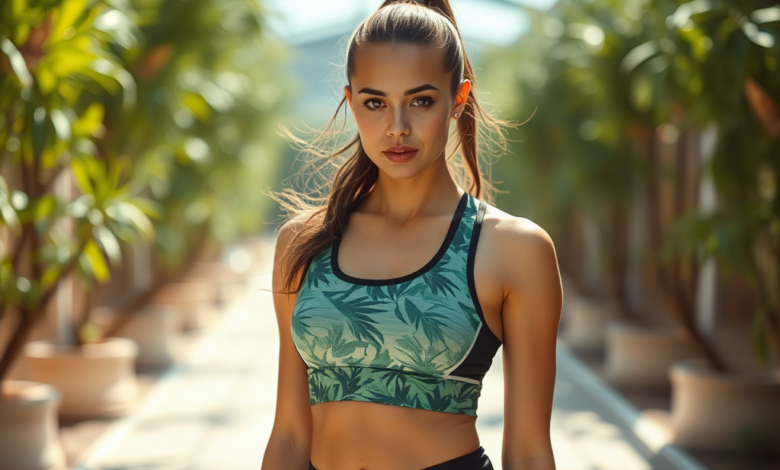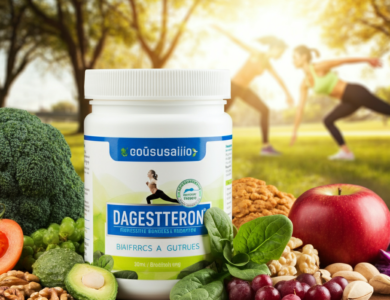How to Embrace Sustainability in the Athletic Wear of Tomorrow
The Athletic Wear of Tomorrow: Embracing Sustainability in the Fitness Industry

Table of Contents
ToggleKey Takeaways
- Economical materials are forming the eventual fate of the athletic wear industry.
- Driving brands incorporate eco-accommodating practices without compromising execution.
- Customers are progressively focusing on manageability in their buying choices.
- Mechanical progressions are driving advancement in economical athletic wear.
Introduction to Sustainable Athletic Wear
The athletic wear industry has essentially changed throughout the course of recent years, driven by expanding familiarity with natural issues. Today, shoppers are not only searching for superior execution and jazzy sports equipment yet additionally looking for harmless to the ecosystem items. This shift has provoked driving brands to adopt a proactive strategy in embracing manageable practices and materials in their assembling processes. For example, customers can track down Nike promo codes that offer extraordinary limits and permit them to buy economical athletic wear. It denotes a critical stage towards wedding purchaser benefits with ecological obligation. The push for supportability in athletic wear isn’t simply a pattern; it’s a move towards a more mindful and cognizant industry.
Importance of Sustainable Materials
Supportable materials like bamboo, reused polyester, and natural cotton have changed activewear producing. These materials assist with diminishing the reliance on non-sustainable assets and altogether reduce ecological effect. Reused polyester, for instance, is produced using utilized plastic jugs and adds to squander the executives by reusing plastic that would somehow wind up in landfills. This interaction additionally creates less fossil fuel byproducts than virgin polyester creation. Notwithstanding reused polyester, natural cotton is developed without unsafe pesticides and synthetic substances, consequently protecting soil wellbeing and water quality. Bamboo, another reasonable material, is profoundly sustainable and requires less water and no pesticides. Utilizing these materials makes great items and supports natural protection endeavors. By deciding on these reasonable materials, purchasers benefit themselves and the climate. At the point when competitors pick gear produced using reused polyester, they’re not simply
getting a utilitarian and strong garment; they’re likewise saying something about their obligation to supportability. The effect of picking these materials reaches out past the individual, adding to a worldwide work to decrease squander and natural debasement.
Eco-Friendly Practices By Leading Brands
Top athletic wear brands are driving the charge in supportability. A few drives intend to diminish fossil fuel byproducts and waste all through their store network, exhibiting a pledge to a more practical future. A few brands have vowed to utilize just reused polyester by 2024 and have proactively sent off a few product offerings produced using upcycled sea plastic. These endeavors feature the brand’s commitment to handling sea contamination and advancing a round economy. A few brands utilize reused materials in their dress, give a piece of their benefits to natural causes, and urge their clients to fix and reuse their items to broaden the existence pattern of their stuff. These drives demonstrate that adjusting conveying high-performing athletic wear and keeping up with eco-accommodating practices is conceivable. Such undertakings by significant brands set a trend for the business, empowering more organizations to take on comparable maintainable practices.
Consumer Demand for Sustainability
Current buyers are more instructed and worried about the ecological effect of their buys than at any other time. More than 60% of purchasers think about manageability significant while purchasing athletic wear. The adjustment of shopper conduct constrains brands to embrace reasonable practices to meet market assumptions and keep up with intensity. The move towards supportability isn’t restricted to individual shopper inclinations; it mirrors a more extensive cultural change toward natural cognizance. Subsequently, brands that focus on supportability add to natural protection and assemble dedication and entrust with their client base. This developing interest for maintainable items pushes brands to improve and offer eco-accommodating other options, making a positive pattern of mindfulness and activity.
Technological Advancements Driving Innovation
Mechanical advancement is fundamental in making supportable athletic apparel. Developments, for example, bio-creation, which includes developing materials in a lab setting, make ready for new, feasible choices. Bio-manufacture permits the production of custom materials to meet explicit execution and supportability prerequisites. This degree of customization guarantees that reasonable materials can proceed as well as, while perhaps worse than, customary materials. Also, high level coloring methods that utilization less water and energy are turning out to be more normal, further diminishing the natural impression of apparel creation. Strategies like advanced printing and waterless coloring limit the utilization of water and synthetic compounds, making the creation interaction all the more harmless to the ecosystem.
These innovative enhancements guarantee that feasible sports equipment meets or surpasses the presentation principles of conventional choices. For example, bio-manufactured materials can be designed to offer predominant breathability, solidness, and solace. This combination of innovation and maintainability drives the business
towards more mindful creation rehearses. Advancements in reusing advancements are likewise making it simpler to reuse utilized materials into great athletic wear, further diminishing the business’ natural effect.
Practicality Meets Performance
One of the primary worries about feasible athletic wear is whether it matches customary stuff’s exhibition norms. Luckily, present day economical materials offer equivalent, in the event that not predominant, execution qualities. Distributions have featured a few feasible running shoes that give a similar solace, solidness, and execution as their customary partners. These shoes integrate padding, strength, and breathability, guaranteeing competitors perform at their best.
Also, feasible athletic wear frequently incorporates inventive highlights, for example, dampness wicking, fast drying, and hostile to microbial properties, guaranteeing that competitors don’t think twice about execution while going with harmless to the ecosystem decisions. These elements are accomplished through cutting edge materials and advances that improve the stuff’s usefulness. For example, textures made from
can be intended to pull sweat away from the body, guaranteeing competitors stay dry and agreeable while taking part in vivacious activity. Against microbial medicines assist with decreasing smell causing microorganisms, guaranteeing that stuff remains new even after rehashed use. These exhibition improving highlights make feasible athletic wear a practical choice for serious competitors and easygoing wellness devotees.
Impact of Industry Standards and Certifications
Industry principles and confirmations are essential in directing and approving athletic wear brands’ maintainability endeavors. Certificates like assurance that materials stick to severe ecological and social principles. GOTS, for example, affirms that materials are produced using natural strands and are created in thorough consistence with ecological and social rules across the whole store network. GOTS and OEKO-TEX, then again, confirms that the materials don’t contain hurtful substances. Brands that acquire these certificates can without hesitation impart their obligation to maintainability to shoppers, building trust and straightforwardness. By sticking to these guidelines, brands exhibit their commitment to moral and harmless to the ecosystem rehearses. Certificates assist with building customer trust and set a benchmark for the business. They additionally guarantee buyers that their items are economical and meet
thorough principles. This straightforwardness is fundamental in encouraging a culture of responsibility and obligation inside the business.
Conclusion
The shift towards economical athletic wear is something beyond a pattern; it is turning into the new norm in the business. As purchasers keep on focusing on eco-accommodating choices, driving brands are moving forward to offer maintainable arrangements without compromising execution. With mechanical headways and severe industry norms, the eventual fate of athletic wear looks brilliant and green. By picking economical athletic wear, buyers can appreciate great items while adding to the prosperity of our planet. This shift towards manageability is tied in with encouraging a culture of natural stewardship and obligation. As additional brands and customers embrace reasonable practices, the athletic wear industry will keep on developing toward an additional manageable and moral future.



